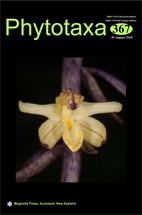Abstract
The Espinhaço Range in Brazil is one of the richest regions in the world in plant species. It is also the main center of diversity and endemism of many taxa, including Paepalanthus. This genus is the second largest in Eriocaulaceae, and the third largest genus of the Brazilian flora. This work aims to survey the Paepalanthus richness in the Central Espinhaço Range in Minas Gerais. A checklist of 116 Paepalanthus species and two varieties is presented here, with data and comments about richness, endemism, and conservation, together with a new synonym for Paepalanthus bonsai and a new combination for Actinocephalus, both endemic species. Among the 116 recorded species, 56 occur inside at least one Protected Area, 54 are endemic to the Central Espinhaço Range in Minas Gerais, of which 17 are micro-endemic. Ten species known only from the type specimen or poorly known were rediscovered, while 15 species remain known only from the type. The novelties presented here result from extensive and intensive field efforts, but there are areas of difficult access that remain poorly explored. Further investigation in these areas might lead to the discovery of unknown and rare species.

